Homebuying Returns to a Healthy Level as Sales Increase Year-Over-Year Across Top Markets
NEWPORT BEACH, Calif., Aug. 21, 2023 /PRNewswire-PRWeb/ -- Today, the experts at Zonda, the housing industry's foremost advisors, released the New Home Market Update report for July 2023.
The state of today's housing depends on who you are, where you are, and what you have to offer. The Zonda team asked builders across the country to describe their local housing conditions and the responses run the gamut from slower than expected to softening, competitive, inconsistent, normalizing, stable, active, resilient, good, and very strong.
The reality is sales are back well above 2019 levels nationally and across most top markets. Some of those sales are driven by incentives and discounts and some are even as prices rise in select communities again. The latest data for July shows that sales have climbed 26% from the same month in 2019.
"What a difference a year makes." said Ali Wolf, Zonda's chief economist. "This time last year, quick move-ins were starting to pile up, the majority of buyers moved to the sidelines, and builders were scrambling to figure out the best way to stimulate demand. Today, homebuying activity has returned to more healthy levels. While the market isn't 'easy,' builders are capturing more than their historical share of buyers."
July showed new home sales marginally ticked down
Zonda's new home sales metric counts the number of new home contract sales each month and accounts for both cancellations and seasonality. This metric shows there were 708,201 new homes sold in July on a seasonally adjusted annualized rate. This was a decline of 0.6% from last month and an increase of 34.3% from a year ago. On a non-seasonally adjusted basis, 59,836 homes were sold, 36.4% higher than last year and 12.3% above the same month in 2019.
Some of 2022's weakest markets are posting largest year-over-year gains
Total sales volume is influenced by both supply and demand. Zonda's New Home Pending Sales Index (PSI) was created to help account for fluctuations in supply by combining both total sales volume with the average sales rate per month per community. The July PSI came in at 142.0, representing a 36.9% rise from the same month last year. The index is currently 18.5% below cycle highs. On a month-over-month basis, seasonally adjusted new home sales increased 0.2%.
- The markets that posted the best numbers relative to last year were Sacramento (+144.5%), San Francisco (+107.7%), and Phoenix (+104.5%). These western markets faced some of the most dramatic slowdown last year but have since shown improvement. The base effect of last year's low levels is driving the large increases.
- The metros that performed the worst year-over-year were Salt Lake City (-17.4%), Jacksonville (+5.2%), and New York (+15.7%). Notice that the latter two markets are positive. Every one of our select markets posted a year-over-year gain except for Salt Lake City.
- Denver, Minneapolis, and Phoenix were the best performing markets on a monthly basis.
Pricing still barely climbing year-over-year
National home prices increased year-over-year across entry-level, move-up, and high-end homes. Prices rose 0.2% for entry-level to $339,417, 0.4% for move-up to $526,766, and 3.8% for high-end homes to $913,491.
Supplementing our data with a monthly survey Zonda conducts, 44% of builders reported raising prices in July and 51% reported holding prices flat. This stands in direct contrast to the end of last year where roughly 50% of builders were lowering prices and 50% were holding prices flat.
Incentives are still common in today's housing market to help address the affordability constraints for buyers. 58% of new home communities across the country were offering incentives in June, with the most popular incentives being mortgage rate buydowns, funds towards closing costs, and flex dollars.
Building activity increasing but projects still ticking down
There are currently 13,810 actively selling communities tracked by Zonda, down 0.6% from last year. On a month-over-month basis, the national figure slipped 2.0%. Total community count is 28.4% below the same month in 2019. The lack of competition from other new home communities is allowing for some upward pressure on the average sales rate per month per community. Zonda defines a community as anywhere where five or more units are for sale.
- Austin (+14.9%), Riverside/San Bernardino (+11.1%), and Minneapolis (+8.1%) grew community count the most year-over-year. Community count is down 15%, 10%, and flat, respectively, compared to 2019.
- Community count fell the most in Tampa (-18.7%), San Francisco (-12.9%), and Seattle (-12.9%) relative to last year.
- Community count in all of our select markets fell year-over-year.
National quick move-ins (QMIs) totaled 25,364, up 1.5% compared to last year but 4.1% lower month-over-month. Total QMIs are 55.9% above 2019 levels. QMIs are homes that can likely be occupied within 90 days.
QMIs are selling out quicker than they can be replaced in many markets as consumers view these homes as a great alternative to the resale market given the dearth of supply.
- On a metro basis, 36% of Zonda's select markets increased QMI count year-over-year.
- The markets that grew the most year-over-year were Los Angeles/OC (+40.8%), Phoenix (+30.6%), and Denver (+25.1%).
- Jacksonville, Las Vegas, and Salt Lake City have seen the most growth in QMIs compared to the same time in 2019, up 174.8%, 164.0%, and 117.6%, respectively.
- QMIs are down the most compared to 2019 in Atlanta (-58%), Seattle (-57%), and Baltimore (-53%).
Methodology
The Zonda New Home Pending Sales Index (PSI) is built on proprietary, industry-leading data that covers 60% of the production new home market across the United States.
Reported number of new home pending contracts are gathered and analyzed each month. Released on the 15th business day of each month, the New Home PSI is a leading indicator of housing demand compared to closings because it is based on the number of signed contracts at a new home community. Zonda monitors 18,000 active communities in the country and the homes tracked can be in any stage of construction.
The new home market represents roughly 10% of all transactions, allowing little movements in supply to cause outsized swings in market activity. As a result, the New Home PSI blends the cumulative sales activity of recently sold-out projects with the average sales rate per community, which adjusts for fluctuations in supply. Furthermore, the New Home PSI is seasonally adjusted based on each markets' specific seasonality, removes outliers, and uses June 2016 as the base month. The foundation of the index is a monthly survey conducted by Zonda. It is necessary to monitor both new and existing home sales to establish an accurate picture of the relative health of the residential real estate market.
Visit ZondaHome.com or follow us on LinkedIn and Facebook for more information.
About Zonda
Zonda provides data-driven housing market solutions to the homebuilding industry. From builders to building product manufacturers, mortgage clients, and multifamily executives, we work hand-in-hand with our customers to streamline access to housing data to empower smarter decisions. As a leading brand in residential construction, our mission is to advance the home building industry, because we believe better homes mean better lives and stronger communities. Together, we are building the future of housing.
Media Contact
Valerie Sheets, Zonda, 949-294-9557, [email protected], https://zondahome.com/
SOURCE Zonda


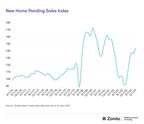
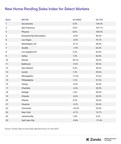
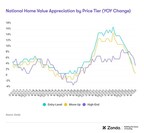
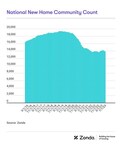

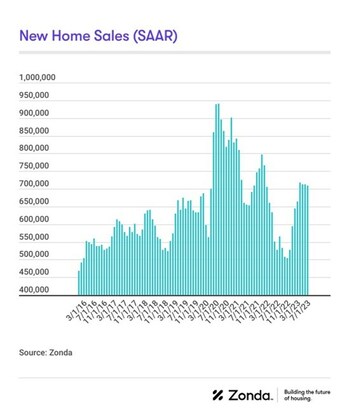
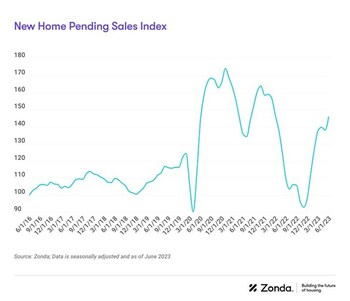
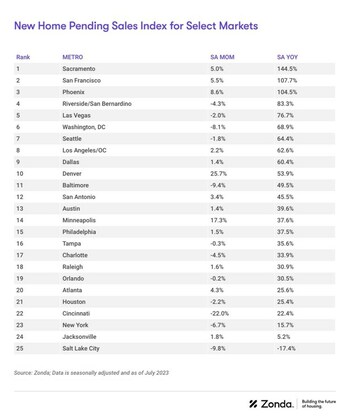
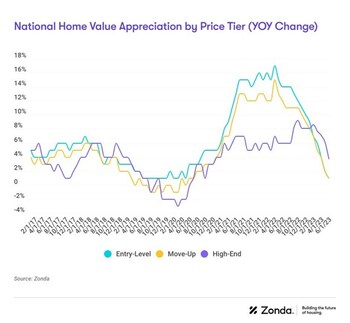
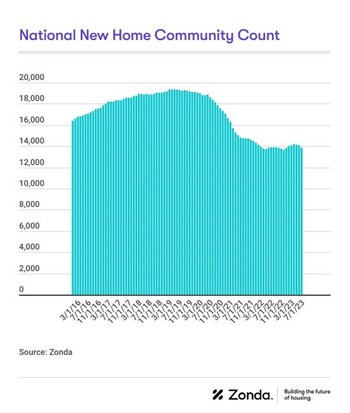
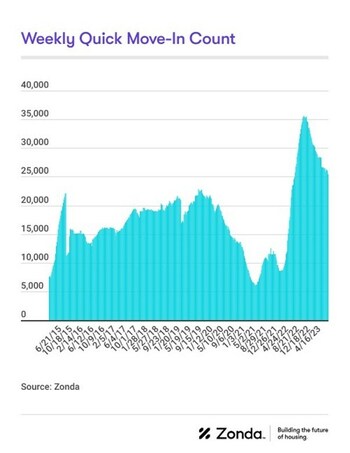
Share this article